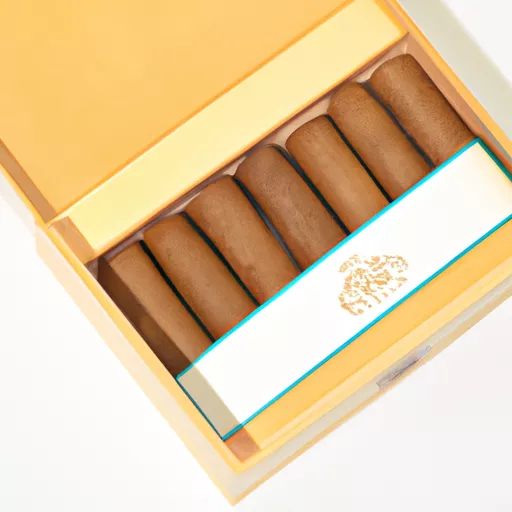
As a cigar enthusiast, I have always been curious about the world of little cigars. Despite their small size, they pack a powerful punch and offer a unique smoking experience. In this article, I will share everything you need to know about little cigars – from their history and production to their flavors and smoking etiquette.
History
Little cigars, also known as cigarillos, have a long history dating back to the 19th century. They were first produced in Spain and quickly gained popularity across Europe. These small cigars were typically made with leftover scraps from larger cigars, making them an affordable option for the working class.
In the 20th century, little cigars saw a surge in popularity in the United States, thanks to their convenience and affordability. During the Great Depression, when most people could not afford traditional cigars, little cigars became a more accessible option. They were also a common sight at saloons and pubs, where they were often paired with a glass of whiskey.
Production
Little cigars are made using a similar process to that of traditional cigars. They are made from a blend of tobacco leaves, which are harvested, cured, and fermented before being rolled into a small length of tobacco. The leaves used for little cigars are typically air-cured, as opposed to the fire-curing process used for larger cigars.
After the leaves have been rolled, they are aged for a period of time before being filled with a blend of tobacco leaves, called the filler. The filler is then wrapped in a tobacco leaf, known as the binder, and finally, the entire cigar is wrapped in a homogenized tobacco leaf or paper and sealed with adhesive. The result is a tightly rolled little cigar, ready to be smoked.
Flavors
Little cigars come in a variety of flavors, making them an appealing option for smokers who enjoy a bit of variety in their smoking experience. Some popular flavors include vanilla, cherry, chocolate, and menthol. These flavors are typically added using flavoring agents during the production process.
Additionally, the type of tobacco used in little cigars can also contribute to their flavor. Connecticut shade (also known as the Connecticut wrapper) is a lighter and more mild tobacco, while Nicaraguan and Brazilian tobaccos tend to have a richer and bolder taste. The Dominican Republic is also a popular region for growing tobacco used in little cigars.
Smoking Etiquette
As with any form of smoking, there are certain etiquette guidelines that should be followed when smoking a little cigar. Firstly, it is important to be mindful of your surroundings and avoid smoking in areas where it is not allowed. This includes public spaces and indoor environments.
When it comes to actually smoking the cigar, there are a few things to keep in mind. Firstly, do not inhale the smoke as you would with a cigarette – instead, hold it in your mouth and savor the flavor. Also, make sure to properly light the cigar and keep it lit throughout your smoking session by gently blowing on the ember. And finally, take your time and enjoy the experience – little cigars are meant to be savored and enjoyed at a slower pace than cigarettes.
Benefits
Now that we have covered the basics of little cigars, let’s talk about some of the benefits they offer. One of the main reasons people are drawn to little cigars is their affordability. They are often much cheaper than traditional cigars and can be a great option for those on a budget.
Additionally, little cigars offer a quicker smoking experience compared to larger cigars. While a traditional cigar can take an hour or more to smoke, a little cigar can be enjoyed in 10-15 minutes. This makes them a great option for a quick smoke break or when you don’t have a lot of time to spare.
Little cigars also come in a variety of flavors, as mentioned before, making them a fun option for those looking to mix up their smoking experience. And for those looking to try out different types of cigars without committing to a full-size one, little cigars are a great way to explore different flavor profiles.
Drawbacks
While little cigars offer a lot of benefits, it’s important to also consider their drawbacks. Due to their small size, little cigars tend to have a shorter lifespan compared to traditional cigars. This means they can dry out quickly, affecting their flavor and smoking experience. It’s important to properly store them in a humidor to maintain their quality.
Another drawback is that little cigars are often perceived as a “cheap” or “less sophisticated” option compared to traditional cigars. This can be a deterrent for some cigar enthusiasts who place importance on the image and prestige associated with cigar smoking.
Conclusion
In conclusion, little cigars may be small in size, but they offer a unique and affordable smoking experience. With a rich history and production process similar to traditional cigars, they are a great option for those looking to explore the world of cigar smoking. So next time you’re in the mood for a quick smoke break or want to try out new flavors, why not give little cigars a try? Who knows, you may just discover a new favorite.